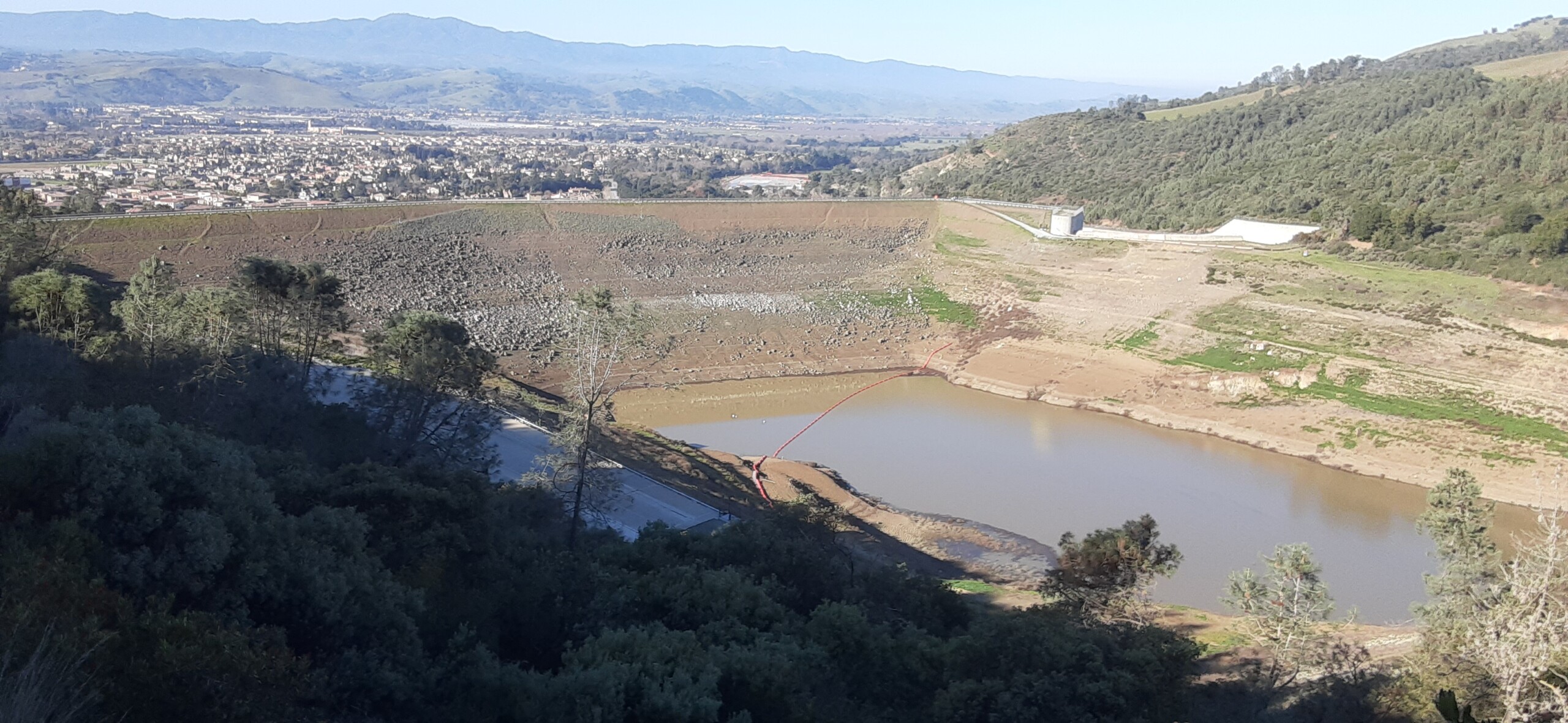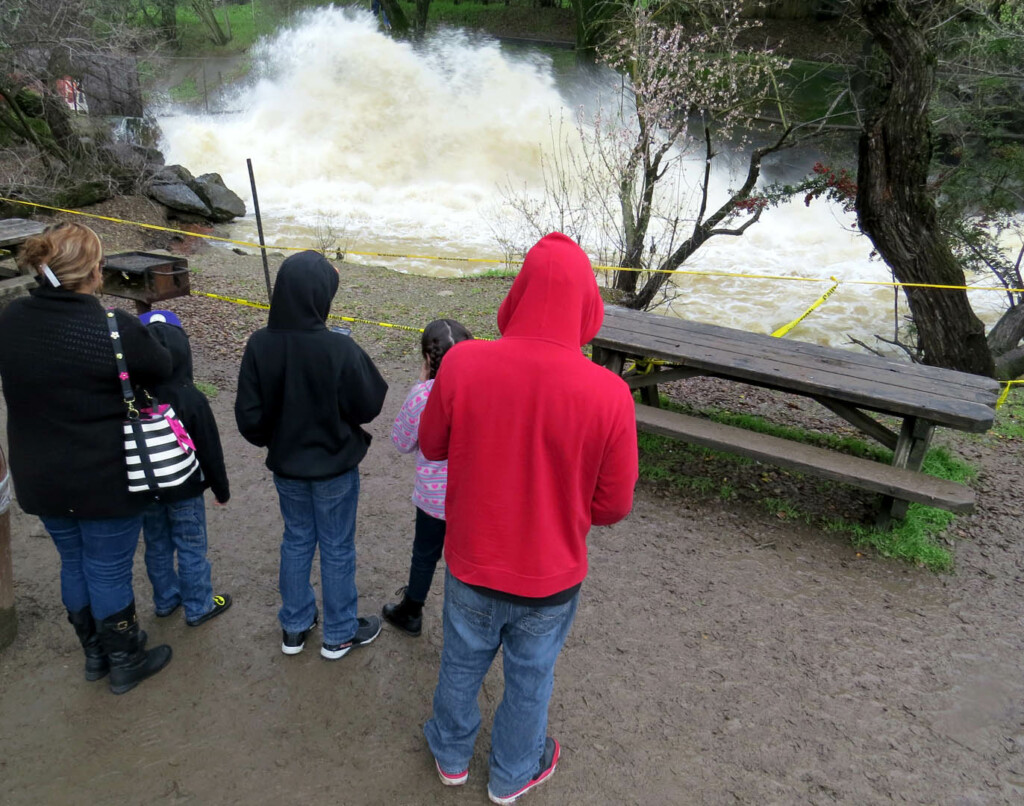Anderson Dam and other projects receive $727 million funding from EPA
San Jose Mayor Matt Mahan sees the No. 1 threat to his city is failure of dam in a major earthquake.

Photo by Marty Cheek
Anderson Dam, looking west. The project is scheduled to be completed in 2030.
By Calvin Nuttall
The U.S. government is giving Valley Water a loan package worth $727 million to fund critical water projects in the county.

Photo by Marty Cheek
Residents watch water released out of Anderson Dam from Coyote Creek Park in February 2018.
Radhika Fox, assistant administrator with the Environmental Protection Agency, made the announcement Feb. 23 at a press conference on top of Anderson Dam, which is now undergoing a 10-year reconstruction project. The EPA’s commitment includes the 100th loan financed through the Water Infrastructure Finance and Innovation Act (WIFIA) and provides funding for the Anderson Dam Seismic Retrofit Project and the Coyote Creek Flood Protection Project, among others.
“The WIFIA program is proud to support Santa Clara Valley Water District as it undertakes these critically important water infrastructure projects with our flexible, innovative master agreement financing frameworks,” said WIFIA Program Director Jorianne Jernberg in a press release. “With two loans closed, we look forward to continuing our relationship throughout the remainder of the master agreement’s financing commitment from EPA.”
Valley Water officials know making smart investments in water infrastructure and technology today remains the most cost-efficient way to ensure Santa Clara County has enough safe, clean water now and into the future, said John L. Varela, Valley Water board chair in a press release.
“Thanks to WIFIA, we can do this in a cost-effective manner that will benefit our rate and taxpayers,” he said.
San Jose Mayor Matt Mahan looks at the risks as a city to life and property and sees the No. 1 threat as the potential for the failure of this dam in a major earthquake.
“Were the dam to be full and we experience a serious earthquake, we would have the potential for well over 100,000 residents to be faced with catastrophic flooding, and untold risk to human life,” he said.
Anderson Reservoir is the largest by far in Valley Water’s system of 10 reservoirs, containing almost 90,000 acre-feet of water at full capacity, more than 50 percent of the total storage volume of the system.
In 2012, seismic analysis of the dam showed that it was potentially unsafe in the event of a major earthquake. The resulting retrofit project began with an expected price tag of $200 million, which has since ballooned to an estimated $1.2 billion as further surveys have shown the risk to be greater than initially thought. Since 2020 the reservoir has been restricted to three percent capacity, with project completion projected for 2032.
The Coyote Creek Flood Protection Project was developed in response to the record flooding that occurred in 2017 when Anderson overflowed its spillway during a major rain event. More than 20,000 gallons of rainwater broke a levee north of Cochrane Road and flooded Highway 101, stopping traffic and creating intense gridlock. It also flooded neighborhoods in San Jose, damaging many homes. The project aims to reduce the risk of a similar event happening again.
Calvin Nuttall is a Morgan Hill Life freelance reporter
